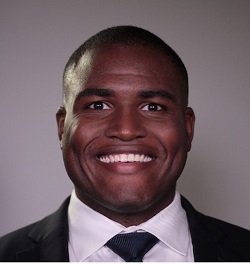Transcripts
 Erik: Joining me next on the program is Harley Bassman, perhaps better known as the Convexity Maven. I should point out to our listeners that we are taping this segment on Tuesday afternoon, so our discussion will not reflect anything that happened in Wednesday and Thursday’s markets.
Erik: Joining me next on the program is Harley Bassman, perhaps better known as the Convexity Maven. I should point out to our listeners that we are taping this segment on Tuesday afternoon, so our discussion will not reflect anything that happened in Wednesday and Thursday’s markets.
Harley, I think the big question that’s on everybody’s mind is we know we’ve got at least a correction that’s in play. We have now retested those lows that we saw about eight weeks ago. If it was a correction, it’s probably time for the correction to be over – at least historically, it’s about nine weeks, it’s about time.
On the other hand, it could be that we’re beginning a bear market. So the big question on everybody’s mind is how will we know when the real bear market is on? And, conveniently, you’ve recently written a piece titled “How Will I Know?“
Tell us the overview. How do you know whether it’s a correction or a bear market? And what do you see on the horizon?
Harley: Thank you for inviting me to the show. It’s a pleasure to be here. I have a couple of big thoughts. And if you go to my website convexitymaven.com you can see some of my past commentaries.
You know, the Fed, the ECB, BOJ, China – they’ve pumped money into the system and kind of elevated everything. And, using financial repression, they’ve taken rates down and forced money into riskier assets.
And along with that, you’ve seen this increased correlation between interest rates and equities. So for the last nine years they’ve moved in opposite directions. Stocks up, bonds down, and vice versa. This is very different than what it was prior to 2008/2009 where they moved more or less randomly.
What you’ve seen over this time is people building up positions in risk parity, low volatility, passive investing, that takes advantage of the self-hedging nature of stocks and bonds. I think what’s going to happen at some point is you’re going to see stocks and bonds both decline. Interest rates go up, and stocks decline.
And when that happens, this leverage in the system, it’s going to have to unwind. So that’s what I’m watching for. And you could look for Bloomberg or other sources that basically show the correlation of interest rates to equities.
 Erik: Joining me next on the program is Darius Dale, Director of Macro Research for Hedgeye. Our regular listeners know that Hedgeye always sends us a fantastic book of graphs and charts. I highly recommend that you download it as Darius and I will be referring to it throughout the interview. You’ll find the download link in your Research Roundup email.
Erik: Joining me next on the program is Darius Dale, Director of Macro Research for Hedgeye. Our regular listeners know that Hedgeye always sends us a fantastic book of graphs and charts. I highly recommend that you download it as Darius and I will be referring to it throughout the interview. You’ll find the download link in your Research Roundup email.
Our regular listeners are already familiar with the process that Hedgeye uses. But for any new listeners, we’ve asked Hedgeye to go ahead and send us the full chart book. So the first 15 or so slides are for reference of any new listeners.
Darius, why don’t we go ahead and focus on your three main topics, starting on Slide 18. A lot of our listeners think of your colleague Keith McCullough as probably the most bullish guest that we’ve had on this program. So even Hedgeye is turning bearish in this environment. The first of your three macro themes for the second quarter: Is the USA growth cycle perhaps reaching a cyclical peak? Tell us more about it.
Darius: Thanks, Erik. Thanks for having me. I’m a huge friend of the show. I guess before we even get started I just wanted to address the hearsay amongst your listeners. We definitely appreciate the kind words, but within the hallways of Hedgeye, Keith is certainly no permabull. We like to go both ways at Hedgeye in terms of sequencing the cycle, but I would say Keith probably has more of a bearish bias. When he gets out of bed, we kind of have to cajole him a little bit to turn bullish. Fortuitously, we’ve caught some pretty big up moves.
Erik: Well, I think that probably the way to describe it is Keith is a very outspoken individual. And the times that he’s been on the show in the past he has been very adamant in a bullish view. And he’s been proven right by the market. So we’ve got to credit him with that. Even Keith McCullough has turned bearish though.
So what’s going on with the peak cycle theme that you’re focusing on as your number one topic for Q2 of 2018?
 Erik: Joining me next on the program is Simon White, managing editor at Variant Perception. Simon has prepared an excellent chart book for our listeners. You can find the download link in your Research Roundup email.
Erik: Joining me next on the program is Simon White, managing editor at Variant Perception. Simon has prepared an excellent chart book for our listeners. You can find the download link in your Research Roundup email.
Simon, I think the question on everybody’s mind is – we’re speaking on Thursday morning, actually, just before the market opens, so we’re one session behind the listeners in terms of market history – Are we at the end maybe of a correction that’s perhaps played out? Or are we maybe at the beginning of something much bigger in terms of equity markets?
What do you guys see on the horizon?
Simon: Hi Erik. Thanks for having me on the show. That’s an excellent question and one unsurprisingly we’ve been getting from many of our clients. I think the lead into this market is extraordinary. The last year we had virtually no bears left. Everyone was no doubt tempted in by a market that had like 202 consecutive days last year within 3% of an all-time high, which is obviously quite extraordinary price action.
And then we had – late January, early February – we had, essentially, the vol spike. We had many different players in the markets that were short vol either implicitly or explicitly. You know, things like risk parity. And we had this sort of mini-crash.
Now, once you get a crash, the market dynamics tend to change very quickly. And then you’re kind of in, to some extent, uncharted territory because you have different players taking their cues off one another. And you get much more volatile price action.
So we have tried to put some sort of template on what happens. We discovered a book, a really good book, by a guy called Didier Somette, called Why Stock Markets Crash. This guy is a geophysicist and he applied the maths of plate tectonics to stock market crashes. And what he noted was that stock markets tend to display very similar behavior after crashes, which is what physicists call harmonic oscillation.
Now, this is the sort of motion that a pendulum – if we go to the slide deck, which I think your listeners can get hold of – on Slide 7 on the bottom chart there you can see a sort of a stylized example of what this motion looks like. This is like the motion of a pendulum, as I said.
You get this self-correcting force towards the center of the movement, but with declining amplitude. And what’s uncanny is how previous crashes, such as in 2011 and 2015 in the S&P – and we have these charts there as well – have followed this pattern.
Generally, it lasts for eight to twelve weeks. And, obviously, we’re kind of eight weeks into that thing. The crash was seven or eight weeks ago. What normally happens is you get a retest of the lows at some point towards the eight-week horizon in that total pattern that we’re going through right now. And we’re kind of bang on. As I say, it’s kind of extraordinary how similar this particular mini-crash is to previous crashes.
For us it’s kind of like we’re right on the precipice, if you like. This is the point where, if we have just seen the lows retested in the last couple of days, and we almost had a very strong rebound yesterday that seems to have followed through to today – Thursday as you say, Erik.
If that’s something that is the lows being retested, then we should expect to see some sort of short-term rebound because that crash pattern dynamic is over. But we’re kind of right at the precipice. I wish I had a 100% solid answer, but when you’re in this sort of highly volatile state as we are today, it’s extremely difficult to know 100% for sure.
 Erik: Joining me next on the program is MI2 Partners (Macro Intelligence 2 Partners) founder, Julian Brigden. As always, Julian has prepared an outstanding slide deck for us. You’ll find the download link in your Research Roundup email. If you’re not yet registered, just go to macrovoices.com and look for the download and registration instructions next to Julian’s picture on our home page.
Erik: Joining me next on the program is MI2 Partners (Macro Intelligence 2 Partners) founder, Julian Brigden. As always, Julian has prepared an outstanding slide deck for us. You’ll find the download link in your Research Roundup email. If you’re not yet registered, just go to macrovoices.com and look for the download and registration instructions next to Julian’s picture on our home page.
Julian, I know last time we spoke it was a very similar market environment. You had made some money for your clients on a short Treasury trade. You had then told them to cover, and were waiting for a bounce to put that back on. I think that, since then, you have put that back on. You’ve made some more money for them. And I think, at least partially, you’ve started to take it off.
So, how do things look as we start to look into your slide deck here, in terms of what we’re seeing in today’s market?
Julian: Thanks very much for having me back on the show, Erik. It’s been way, way, way too long.
Talking about the Treasury market, big picture, we firmly believe that we saw the lows in Treasury yields in 2016. And that we’re structurally in a bear market. But we did recently – having been pretty aggressive shorts into Q4 – recommend that clients back off on those a little bit. Not fully, but to some extent. And it’s just because we’ve come up to some very big levels.
If you look at the chart pack that we’ve attached to this, you can see in 10-year yields, this 3.00/3.05 level is a very big level in the Treasury market. And we’re sort of sandwiched between the low 2.60s and that 3.00 level. I think we sort of continue to mess around in that level.
And 30s is actually even bigger. We’ve put in here a chart that takes you right back into the early ‘80s. You can see that we’ve got this inverse head and shoulders pattern, which has built over the last four to five years. That neckline comes in at around this 3.15/3.25 level.
We’ve also got a very long-term trend line. And a number of people have used this one 30-year trend line. I’m not really a big fan of taking something over that long a period. But the one that I really love, which is one that one of my partners uses, is this simple moving averages – 100-month simple moving average.
This has held the bond market all the way since 1985. And it comes in at around 3.25/3.26. We’ve actually never, ever closed above it since 1985. We opened above it once, in ‘94, but we closed below it. And, to me, this is a big level.
 Erik: Joining me next on the program is Alhambra Investments CIO Jeffrey Snider. The subject today is, of course, going to be yield curves.
Erik: Joining me next on the program is Alhambra Investments CIO Jeffrey Snider. The subject today is, of course, going to be yield curves.
Jeff, I think most people know that there is this statistic that every major post-war recession has been predicted by an inverted yield curve. The thing that strikes me is, first of all, I think there’s probably more information to gain from just whether or not the curve is inverted.
But, particularly, the statistic about all these post-war recessions – all of those recessions happened before the current era of central bank intervention in the Treasury market. And it was also before the breakdown in the Eurodollar system, which you described in Eurodollar University as not really occurring until 2007.
So why don’t we start with the big picture? What should we be thinking about when we think “yield curve?” What does it tell us? Is it just the inverted or not? Or is there more to it? And how has the picture changed since 2007–2008, when so many things about the structure of the market are different now?
Jeff: Well, first, Erik, you’re exactly right. The yield curve tells us a lot more than just when it’s inverted and when we should expect recession. There’s a whole lot of dynamic information embedded within the curves – and various parts of the curves – that we can look at that tell us a lot about where we are and where we’re going.
And it’s more than just recession or not. We can look at an even bigger picture than that. What is the baseline economic growth? What is the bond market telling us about not just the baseline economic condition, but how that relates to monetary policy.
And, in some ways, the yield curve is almost like a check on monetary policy. Because the short end relates to what the Fed is doing and monetary alternatives that the Fed can create through its various programs. While the long end says: Well, are those programs effective?
So the combination of the short end and the long end in real time gives us a lot of dynamic and very useful information. Far more than when it inverts in the recession. There’s a lot there that we need to pay attention to. And a lot there that people should have been paying attention to for a very long time.
MACRO VOICES is presented for informational and entertainment purposes only. The information presented in MACRO VOICES should NOT be construed as investment advice. Always consult a licensed investment professional before making important investment decisions. The opinions expressed on MACRO VOICES are those of the participants. MACRO VOICES, its producers, and hosts Erik Townsend and Patrick Ceresna shall NOT be liable for losses resulting from investment decisions based on information or viewpoints presented on MACRO VOICES.
